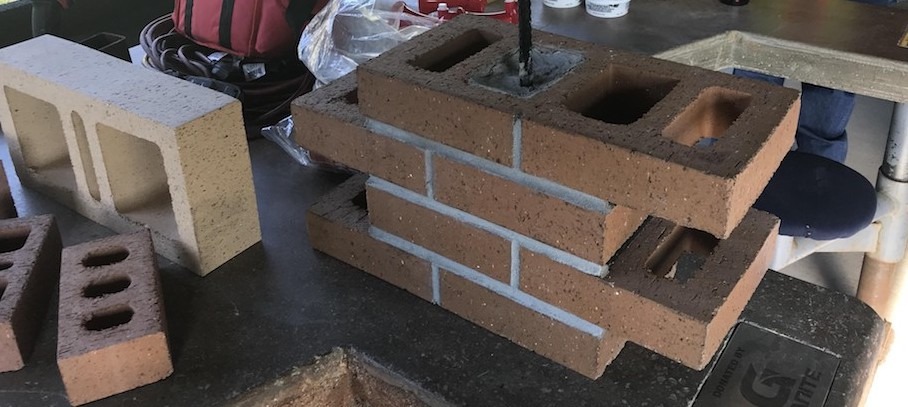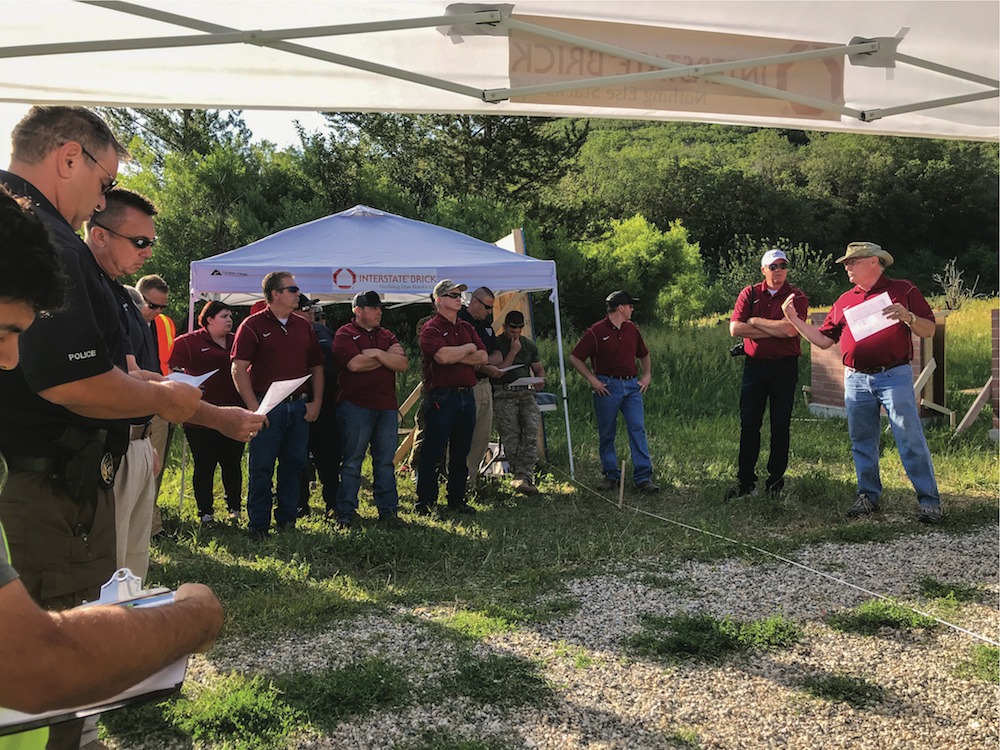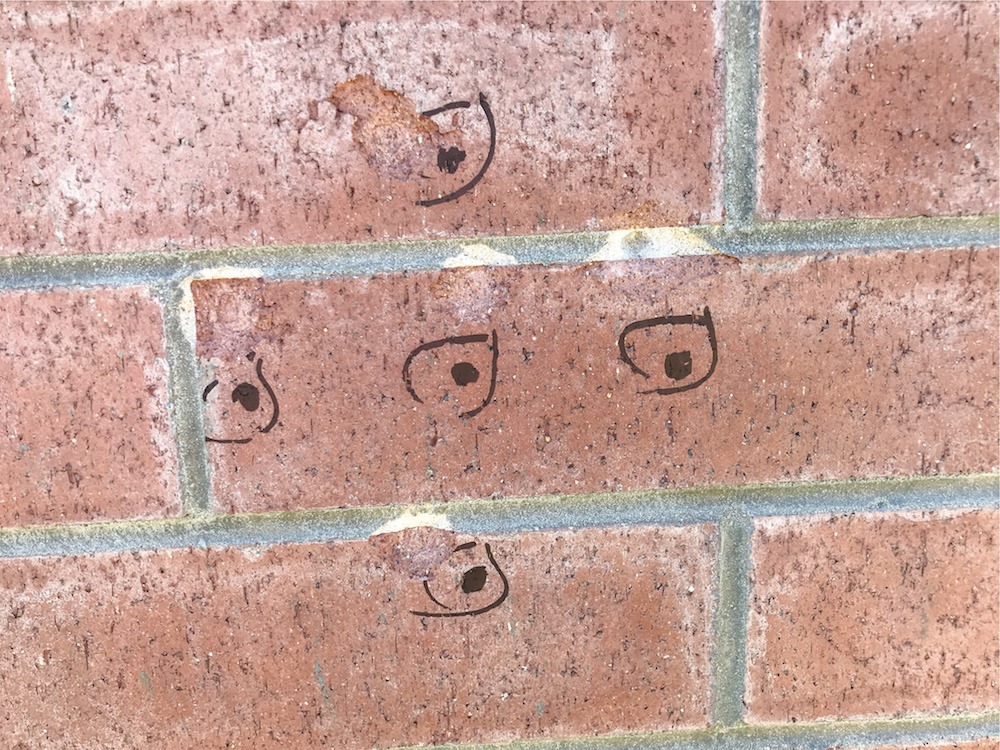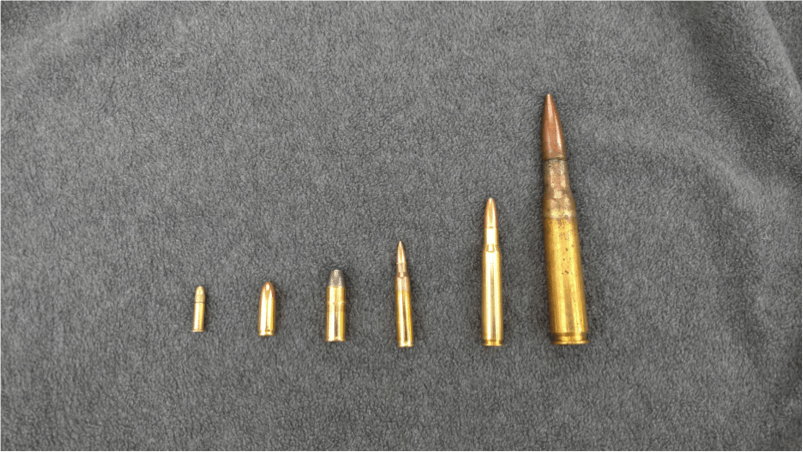The Business of Ballistics: Why Masonry Is Unparalleled Part 1
Words: Dan Kamys, MASONRY Editorial Director
Photos: Interstate Brick, MASONRY
Editor’s Note: I’d like to sincerely thank Don Sackett and Jeff Elder of Interstate Brick for inviting me to attend the ballistics testing that is outlined in this article. I not only found the testing fascinating, but found the methodology and focus on safety throughout the entire event to be impressive. As you will also see, the walls performed well… even better than the Interstate Brick team predicted.
This topic is not something that anyone is going to like talking about. However, placed within the context of senseless acts of violence, building materials can absolutely be a factor in the equation of protecting people. I hope you find the first part of this series to be as fascinating to read as it was for our team to cover.
What Is Structural Brick?
Structural brick, the primary product that Interstate Brick Co. was testing in this process, is unique as compared to brick veneer in that it can be filled with grout and reinforced with rebar.
Here’s how the Interstate Brick website defines their Atlas™ Structural Brick:
Atlas™ structural brick is a hollow clay brick product that was developed to permit the use of reinforcing to be added to enhance the structural characteristics of brick. Brick is an excellent product to resist compression loads, but often masonry is required to act as a beam or wall to resist earthquake, wind, or gravity loads. Reinforcing steel placed in the brick cells is grouted to create resistance to tension. Atlas™ brick are designed similar to concrete block but with allowable design stresses 2 to 3 times stronger. For further information on Atlas™ structural brick see Atlas™ technical data brochure on the Interstate Brick website.
Steven Judd, the Technical Director at Interstate Brick and its sister company, H.C. Muddox, outlined a bit of the history of structural brick.

Reinforced masonry construction had a beginning in San Francisco due to the high amounts of seismic activity in the area. A desire arose for something other than unreinforced masonry to afford the buildings more durability.
“[Unreinforced masonry] doesn’t perform well when you start shaking the building because brick is really great at compression, but not great in tension. Reinforced concrete had been around for a while, and somebody got this great idea to build this brick building and place external straps all the way around the building to hold it together. That was the genesis of structural brick. It obviously looked weird having these bands around it.”
From there, reinforced masonry evolved into putting the reinforcement inside the wall. In older cities such as Chicago and New York, you will frequently see the lower floors of the building at least one-foot thick. An excellent example of this type of architecture is the Monadnock Building in Chicago. Someone had the idea to replace one of the interior wythes of brick with a cavity of reinforced concrete. So, the brick have remained exposed on the outside with a concrete-filled cavity on the inside. The two exposed brick wythes were held together with ties so the wall would act homogenously throughout the building’s life.
The brick industry responded to the development of cavity walls by developing something that would make the construction process a little easier. Thus, structural brick units are shaped similarly to concrete block with face shells, webs, and open cells, which receive the grout and reinforcement.
The manufacturing process, clay material, and shape of structural brick grants these units a higher compressive strength than equal size CMU. For reference, most high-strength concrete block is approximately 3,500 psi. Interstate’s Atlas™ brick, according to Steven, has net compressive strengths ranging between 9,000-15,000+ psi.
A New(er) Question of Resiliency
We first met Don Sackett, the General Sales Manager for Interstate Brick, at the American Institute of Architects Conference on Architecture in June. There, we discussed how several structural brick gas stations/convenience stores in the southeastfunction as storm shelters in the event of a tornado or hurricane, particularly if they were designed as such with proper roof connections. Interstate’s structural brick had been chosen over concrete block for these projects because the brick “didn’t look like a prison” when it was constructed. During our conversation, Don also mentioned that the company would be conducting some ballistics testing the following month.
Steven explained how the testing came about with Interstate Brick’s constant commitment to demonstrating masonry’s resiliency.
“A number of years of ago we marketed the idea that structural brick is a very good use where safety and protection are important. So, we went to Underwriters Laboratories and conducted a four-hour fire test. We’re not aware of any other brick company [that] has a UL fire rating for their brick as a wall system. We also went to the University of Texas to conduct projectile tests, which is required by FEMA [for storm shelter designs]. This is where a 15 lb. 2x4 x10 ft. board is fired out of an air cannon at 100 MPH at the wall. This test is run three times, each at a different location on the wall.”

This early testing that Interstate Brick performed was primarily geared toward hurricanes and tornado resistant design. Ultimately, their conversations with designers, engineers, and agencies about safety included the discussions about ballistic resiliency.
“About a year ago, we started receiving a few phone calls from designers and at least one school district, questioning how ballistic resistant our structural walls were. The best answer we could come up with was ‘we don’t know, but we think they’re pretty good.’ So, we took it upon ourselves to initiate a testing program where we could actually have a legitimate answer backed up by data for that question should people call,” Steven admits.
Interstate’s first move was to examine the testing programs that had been developed by various other groups. They turned to testing protocols created by Underwriter’s Laboratories, the National Institute of Justice, State Department, and ASTM. Using those as a foundation, Interstate created a producer-specified testing protocol and began preliminary testing. For those early “pre-tests”, 16” x 12”sample dry-stacked and grouted walls were shot at (safely) to see how they responded.
Steven explained that these early tests weren’t exactly reflective of how a real structural brick wall would perform. The sample walls weren’t confined and had no continuity. The tests were just performed to get an idea of what the impact of various munitions would do.
Additionally, Interstate Brick tested samples of different grout mixes to see if there was any further enhancement to resiliency that could be possible. After observing the results, Interstate then chose a specific grout and also modified their brick to create a better bond with the grout.
Shortly after these “pre-tests”, Interstate Brick had the opportunity to participate in a demonstration in southern Utah conducted by the Utah Facilities Operations and Maintenance Association (UFOMA). Per UFOMA’s website, their mission is “Providing facilities that support the K-12 educational program by improving safety, serviceability, control, maintenance, and operational costs of Utah’s schools.”

There, they held a ballistics demonstration conducted by The Shooting Institute from Alabama. During the event, designated shooting experts took aim at hollow metal doors, solid wood doors, windows with specialized film, CMU walls, structural brick walls, and steel stud walls with gypsum board sheathing clad with ceramic tile.
What the demonstration did was allow Steven and the Interstate Brick team to see how CMU and structural brick held up. According to Steven, it appeared that the structural brick performed somewhat better and produced less damage than that experienced by the CMU.
Interstate Brick’s July 2019 Ballistics Test and Demonstration
For the July 10th event, select individuals and organization representatives were invited to observe the test. The back of the invitation itself highlighted the importance of safety:
“At Interstate Brick we take safety seriously. This is why we have been testing our Atlas™ Structural Brick in a variety of applications for compliance with various agencies for safe room construction. Whether in a school, police station, government office, or entertainment venue, we are confident that a properly designed structural brick facility, or safe room, will provide protection from shooters. This final testing will give us the certification needed to verify it.”
The testing took place in Salt Lake City, Utah at the Hendricksen PMAA Gun Range. Upon signing in, and signing waivers, all attendees were given PPE and allowed to observe the walls and shooting setup prior to relocating to a safe distance to observe the tests.

Steven Judd goes into detail describing the particulars of the testing. A witness panel, or a “pristine sheet of something held back off the wall,” is the indicator of whether the test is a pass or fail. If any fragments from the wall or shrapnel penetrates or marks the witness panel, it is a failure. If the bullet “causes enough damage to where it causes the wall to rupture and debris to fly off of the wall (even though the bullet didn’t penetrate the wall), and that debris flying off the back of the wall penetrates the paper, that’s a failure.”
Additionally, if the bullet passes through the wall and strikes the panel directly, that too is an automatic testing failure. After each test protocol, the witness panels are removed and “checked with our independent testing laboratory to see if they are still pristine or damaged. They can have dents, that is not something that would critically wound anybody, but must not be pierced or breached to be considered a “pass”.
In July’s test, an 1/8-inch piece of cardboard was used as a witness panel and placed 6 inches from the backside of the wall being tested. Says Steven, these decisions were made carefully because, “in our test, we’re shooting at the minimum distance of all the protocols we’re following, which is from 15 ft. from muzzle to wall.” As current ballistic test protocols vary between organizations, Interstate Brick chose to combine four different testing protocols together to match all the weapons and munitions that are called for. Variances between protocols include a variety of different weapons, shooting distances, ammunition types, and more. Interstate Brick’s goal with this combined protocol testing was to take the worst of the worst. “...So, if someone asked for certain ballistic protocol, we can tell them we have testing that is the same or more critical, and we have the data [to show] the bricks can resist that.”
In addition to selecting the witness panel distance and shooting range, Steven also had to choose the specific weapons being tested. He explains, “We went through a series of handguns, and then we tested a variety of rifles, which some people call long barrels. On the top end of the rifles we used a .50 caliber, which is a half-inch diameter. If you stood one of them [bullet] next to your 12oz. coke can it would be taller.” There was also a “12-gauge shotgun protocol where we used 00 buck, #4 buckshot, and a slug.”

To round out the testing and provide a complete picture of structural brick’s capabilities, Interstate Brick also included armor piercing rounds in their testing protocol to comply with at least one of the published ballistic protocols. Steven explains that, “these rounds, and regular/normal bullets are usually encased in copper...a full metal jacket is a hunk of lead completely encased in copper.” This aspect of the protocol is especially important, because a soft point metal jacket, which means it’s almost fully encased in copper, but the very tip of it is exposed lead, will behave differently. Armor piercing rounds go through more stuff,” says Steven, making this type of bullet especially dangerous, and the protection afforded by structural brick even more essential.
The brick was performing quite well until testing was suspended for safety reasons. “The higher [energy] ballistics…were deflecting off of the wall and ricocheting back into the field of play,” explains Don Sackett, and in the interest of safety, “we terminated testing at that point so that we could build a stronger armored barrier to protect the shooter and also to remove spectators from the field.”
None of the handgun ballistics penetrated the wall, let alone did significant damage. The only mark was a little chip on the front face of the brick. “Safety was the number one priority and everything performed phenomenally,” Don said. To provide a visual example, he described how if you think about when a BB from a BB gun hits a window, it creates a little conical hole in that area of the window. But in this case, there was no hole in the brick but only a little chip out of the brick, nothing went through the wall. None of the hang gun rounds even penetrated past the face shell thickness of the brick. These are encouraging results, to put it mildly, and Interstate Brick is approaching the subsequent testing with greater enthusiasm. “The next level of testing will be higher {energy} ballistics, rifles and a .50 caliber, which we expect to do more damage, but we do not expect it to penetrate {pass through] the wall.”
The Future of Proving Masonry’s Resiliency
As for what’s next, Steven is clear that while they don’t have specifics, the focus will be on safety.
“We’re not sure what’s next specifically, but in our desire to lead the industry in demonstrating how well reinforced brick performs, we will continue our quest to explore solutions. We take it upon ourselves to conduct these tests so that we have data to support our claims. We can say, ‘Hey, this is a good solution for a number of different applications.’ If you need a fire rated wall, we have a solution; or if you need a wall for projectile resistance, we have a solution.”
Don agrees, outlining some scenarios and options where structural brick provide additional safety benefits, when compared to traditional building materials, is the goal. “Whether we have a tornado, or a hurricane that wipes out a building, or ballistics that obviously put the occupants in danger, we can eliminate a lot of those potential risks.” He illustrates this point using a hurricane as a clear example. “When we look at structural brick for hurricanes, one of the big design factors is the damage to the building from the wind and water. The building might remain, but the water damage could be extensive. If we look at our single wythe structural clay wall, we go in with a power washer and we’re back in business the next day. Mold doesn’t grow on masonry...we can take that hit from the water and be resilient, put that building back in operation almost instantly.”

Interstate Brick architect Shannon Perry, AIA, LEED AP, also offers insight on the various uses of structural brick, some of which may be surprising. In addition to requests for ballistic testing reports for shooting ranges, schools, and facilities on military bases, Shannon recounts, “I was asked if we had ballistics testing for a recreational sports park. They wanted to know if structural brick backdrops, batting cages, and walls around he baseball diamonds would be able to stop the baseballs. We were able to refer them to our impact testing that we had done more for tornados which, satisfied the designers.” The practical applications of structural brick are many, and the desire for resilient wall design for a variety of building types and events is expected to increase. For Shannon and the entire Interstate Brick team, this experience underscored the need to have ballistics testing and data available for any client who requests it.
About Interstate Brick: Interstate Brick is widely recognized as one of the premier commercial brick manufacturers in the U.S. Established in 1891, Interstate Brick joined the Pacific Coast Building Products family in 1990. The company’s products, used in residential and commercial construction, offer several distinguishing features that motivate architects and builders across the country to specify them.